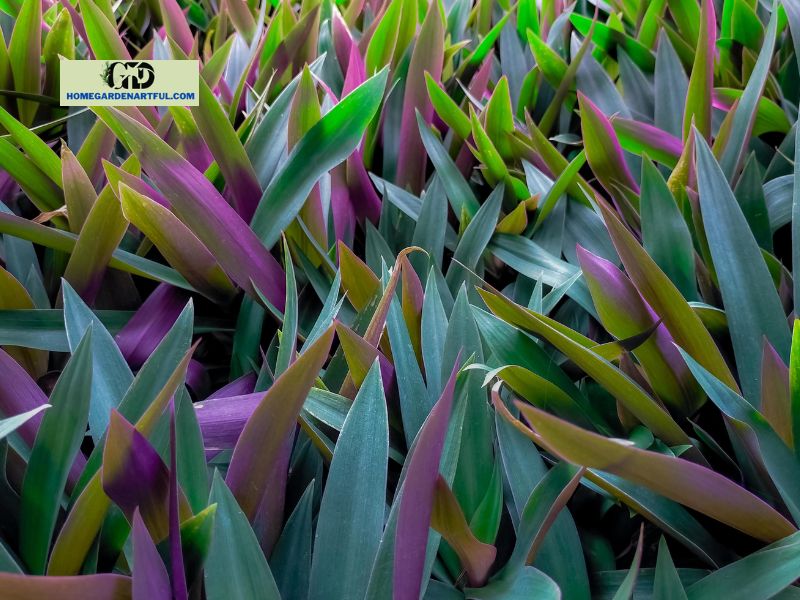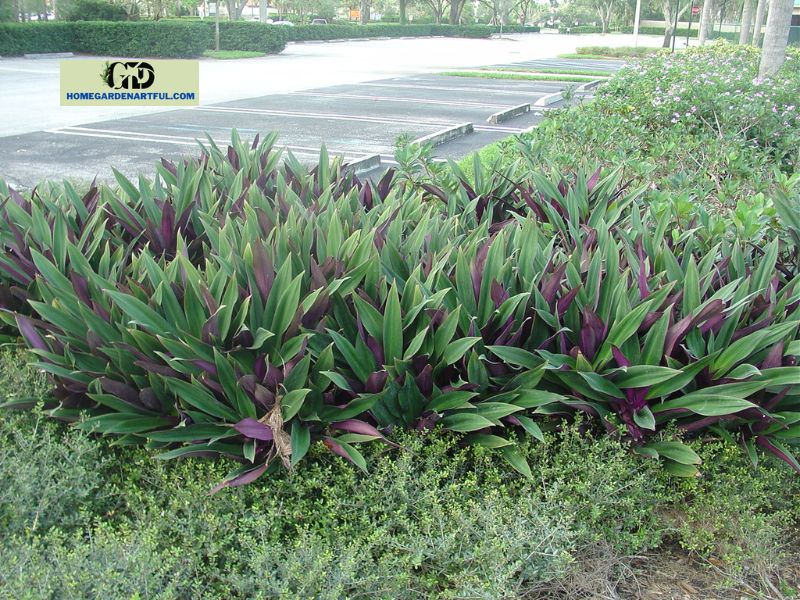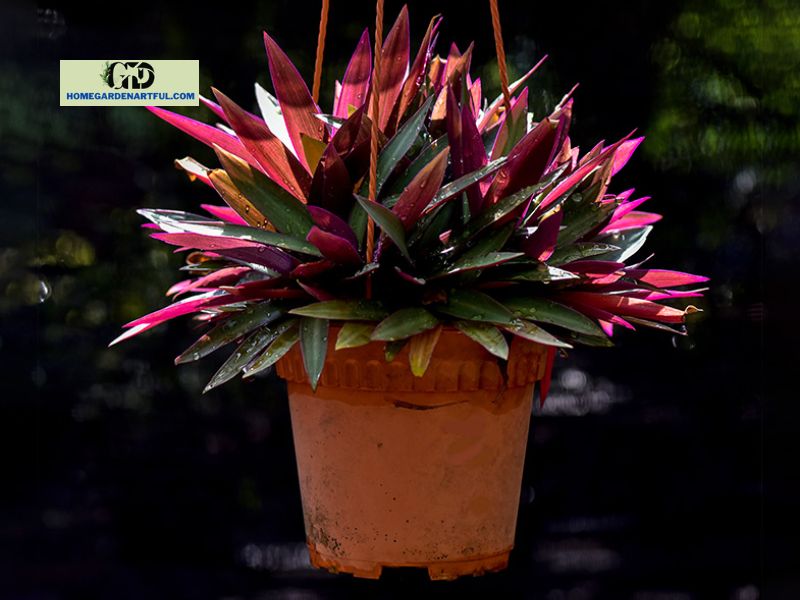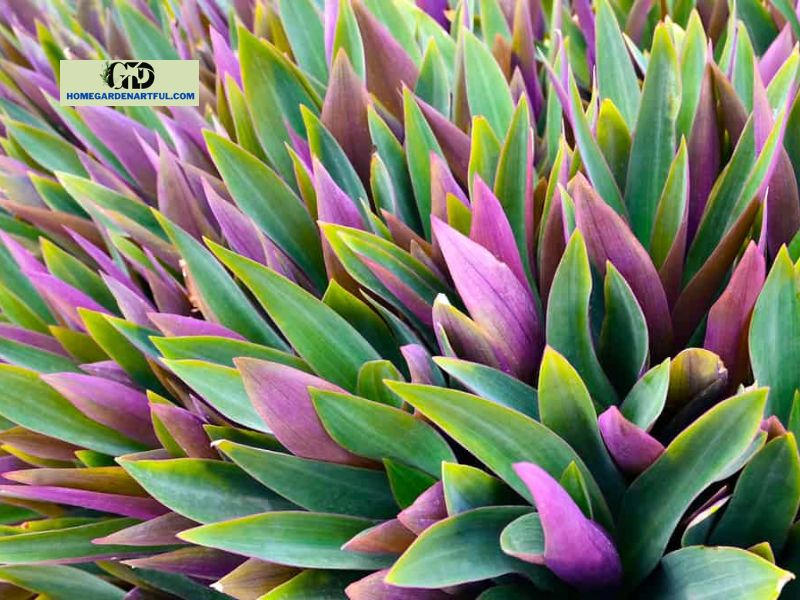Are you finding Oyster Plant in Florida? Tradescantia spathacea, also known as rhoeo spathacea, is commonly known as oyster plants, but they also go by a wide variety of other names, such as tricolor moses, boat lilies, and Moses in the cradle. This herbaceous plant belongs to the botanical family Commelinaceae, which is also referred to as the spiderwort family. Discover at homegardenartful.com!
Growing Conditions of Oyster Plant in Florida

Soil
When planted in somewhat acidic, slightly rich, and well-draining soil, oyster plants tend to do better, however, they will grow happily almost anyplace.
When planted in rocky or loamy/sandy soil, they flourish. Adding some sand and compost to the potting mix is a fantastic way to accomplish this.
Sand will further enhance the soil’s ability to drain and will also raise the amount of nutrients in the soil.
Water
Keeping the water level for your oyster plant at a reasonable level is one of the trickier things to do. They don’t mind being completely dry out, but they also don’t need to be watered excessively. Root rot is often caused by overwatering.
Oyster plants need a reasonable amount of water during their active growth season. When the top two inches of the soil are dry, water your plant. Once the plants go dormant in the winter, you can drastically reduce the amount of watering you do after their growing season.
Furthermore, oyster plants genuinely enjoy living in environments with high humidity. If you’re growing one inside, all you need to do is set up a tray underneath the pot with water and pebbles to simulate humidity.
Sunlight

Depending on the area in which it grows, oyster plants will require different amounts of light exposure. For instance, they cannot survive in direct sunlight and will require shade from the intense afternoon heat if they reside in a warm climate.
Indirect sunlight that is brilliant is the best kind of sunlight. In less hot areas, full sun will do, but in extremely hot areas, some shade is preferable. Partial shade can occasionally cause a leggier plant, but bright light tends to bring out their rich vibrant color in the foliage.
Temperature
Temperature is one thing that oyster plants are really particular about! These plants are not at all hardy to the cold. They are not tolerant of frost and will not withstand the winter.
USDA zones 9 through 12 allow these plants to be grown outdoors, but they must be taken inside before there is a risk of frost. Temperatures between 55 and 80 degrees Fahrenheit appear to be ideal for them.
Additives
Fertilizer is really not necessary for oyster plants to grow well. That should be more than enough nutrients for your plants, as you’ve (hopefully) previously mixed compost into their potting mix or soil.
Pruning is yet another incredibly low-maintenance oyster plant care technique! These plants have a very orderly growth pattern, so all you have to do to keep it looking nice is remove any dead leaves.
Propagate an Oyster Plant

It’s time to learn how to propagate your own oyster plants now that you know what makes them happy! Planting instructions are included on seed packages that you purchase online, but today we’ll cover clipping propagation instead! Here are a few easy planting steps to follow:
1. Older plants will have new branches emerge around their base. You can remove these and replant them in another pot. These examples make the ideal houseplant.
2. Don’t harvest those young shoots till they are four inches tall. Remove their rootlets from the main root ball with care, then transplant it into a different container.
3. Depending on how closely spaced you want your plants to be, dig a hole that is a few inches deep and at least six inches apart.
4. Set it up in a window facing south, cover it with a sheer curtain, and give it plenty of water as it grows.
5. If you want to plant outside, wait until late April, once the final chance of frost has gone. Choose a spot with well-draining soil that receives very moderate shade (particularly in the late afternoon).
There you have it, then! Here are some very basic planting guidelines to get you started with growing oysters on your own. These fellas require little maintenance, and they will provide you with vibrant foliage all year round.
FAQs
Are oyster plants immune to deer?
The resistance of oyster plants to grazing by larger pests like rabbits, deer, and squirrels is another benefit of these plants.
What substances are harmful to oyster plants?
Unfortunately, pest infestations by aphids, spider mites, and white flies can easily affect oyster plants. If they receive excessive watering, they may also develop root rot.
Are oyster plants evergreen or evergreen?
One kind of perennial plant is the oyster plant. This indicates that, provided the plant’s ideal growth circumstances are fulfilled and maintained, they will produce blossoms that will bloom year after year.
Are the roots of oyster plants edible?
The salsify plant, scientifically known as Tragopogon porrifolius, and the oyster plant, tradescantia spathacea, are frequently mistaken.
The salsify plant is commonly referred to as oyster plant because of its reputation as a root vegetable with an edible root that has a flavor similar to oyster meat. The former plant species is not a root vegetable and lacks an edible root.
Why is my oyster plant leggy?
An oyster plant will try to grow toward the light if it is planted in a location that gets excessive shadow. This may cause the plant to become lanky and more prone to toppling over. They will continue to develop in a regular, orderly manner if planted in bright light.


